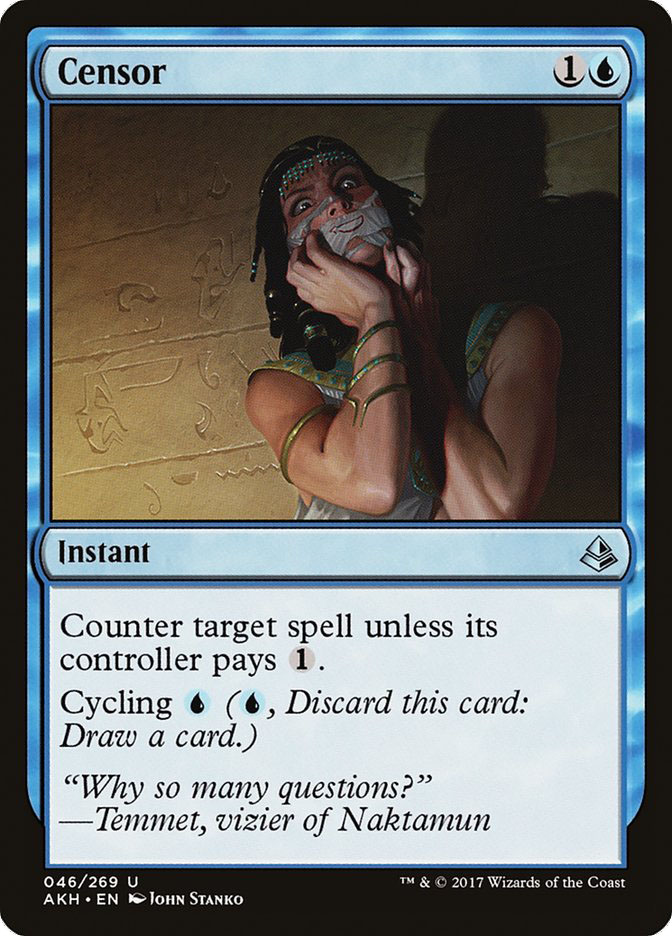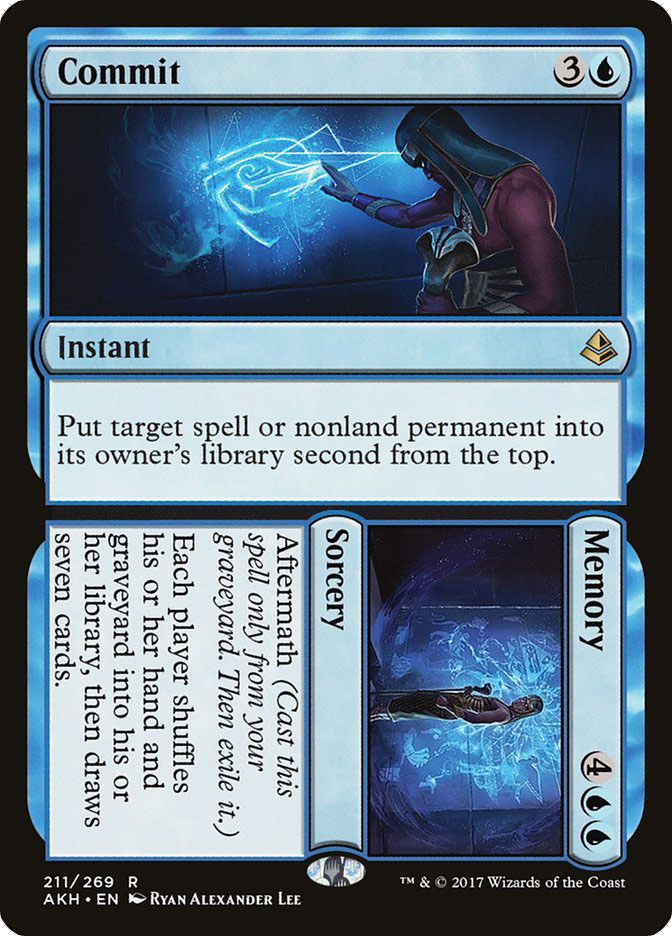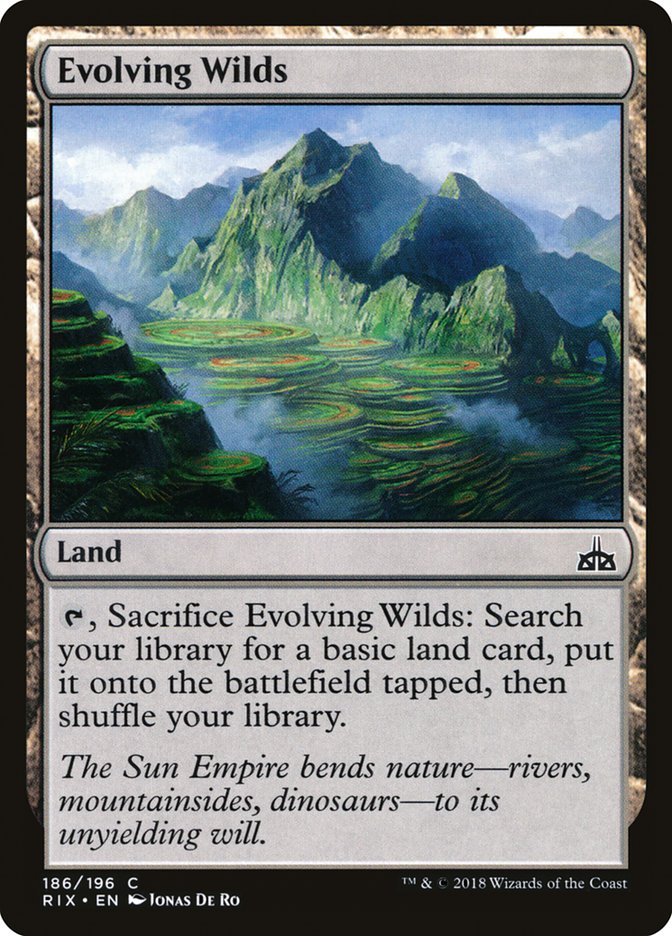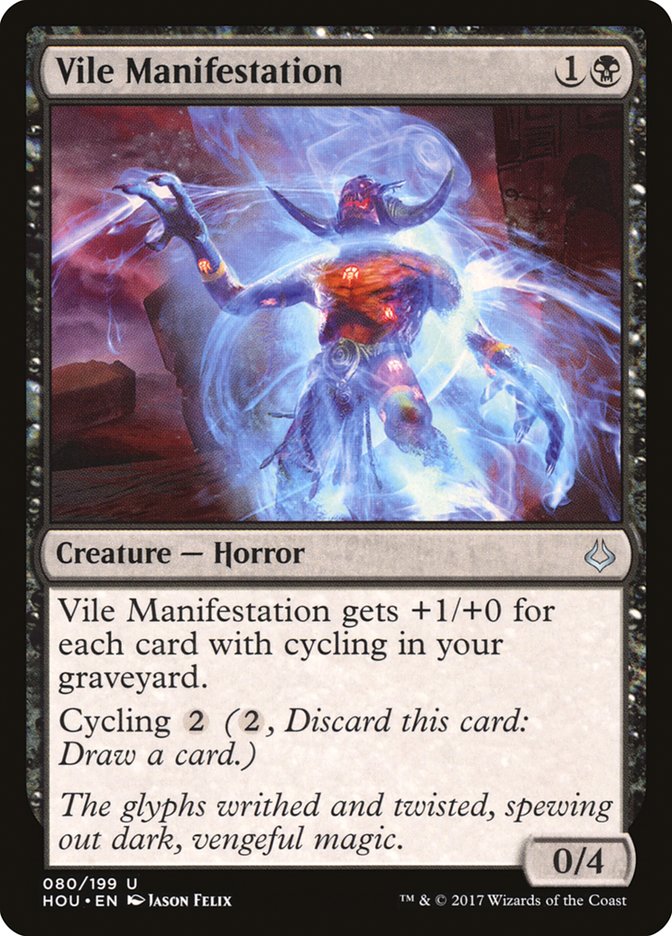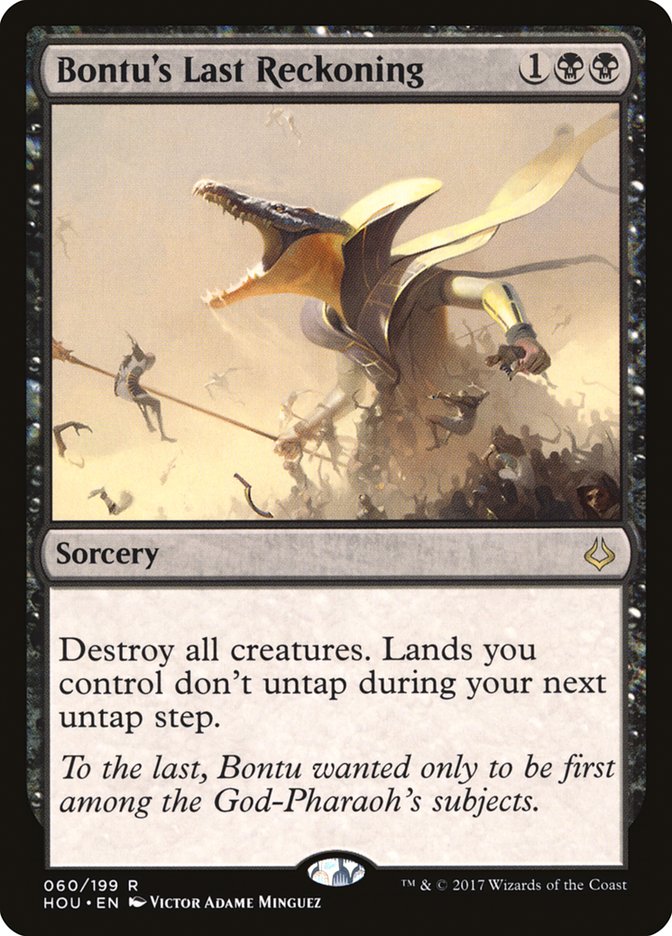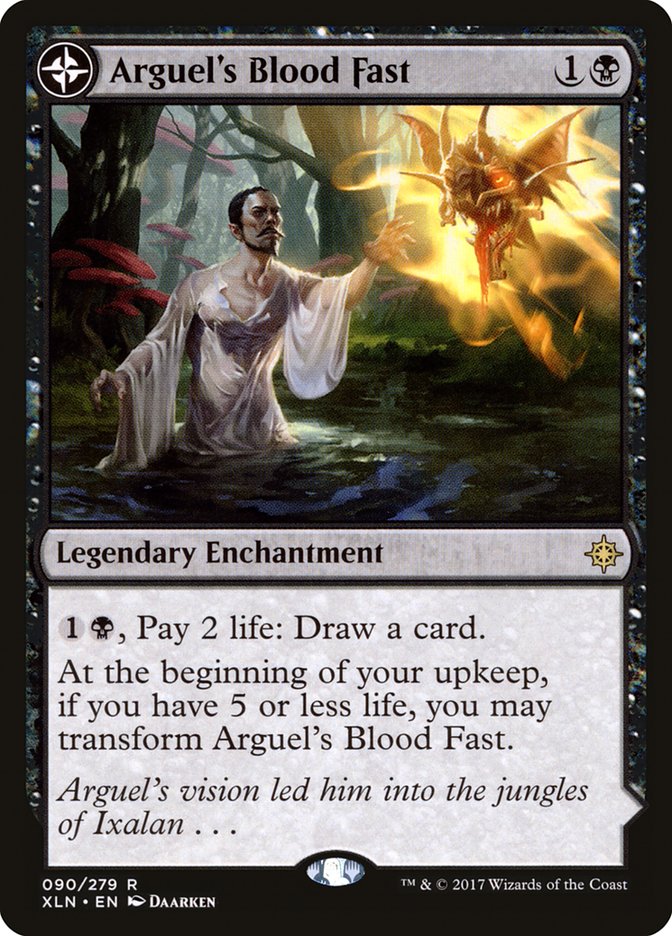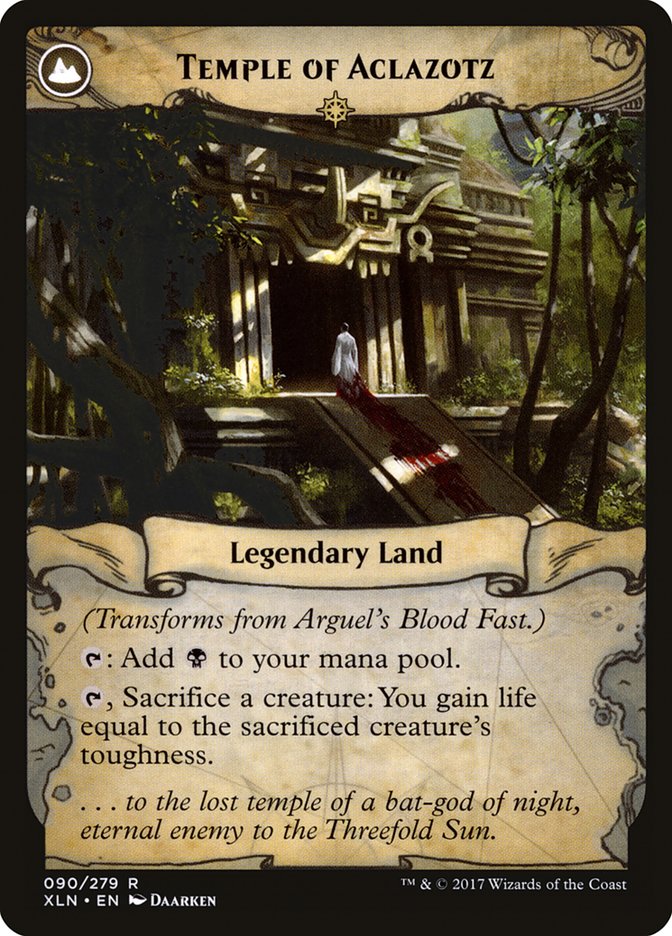The best deck in Standard is Mono-Red Aggro, at least in a vacuum. Oddly
enough, the Top 8 from Grand Prix Memphis contained zero copies, and it’s
not like the Top 8 contained a bunch of decks that absolutely smashed it.
What the hell happened?
Two of the best players with red aggro decks, John Rolf and Matt Severa,
lost win-and-ins for Top 8. If things went slightly differently, Standard
could have a different narrative altogether. Not many top players chose
Mono-Red as their deck of choice, instead opting to try and beat it. I have
a feeling that if this Standard format had a Grand Prix in Asia, you’d see
a bunch of MTG Mint Card players burning people at the top tables.
I suppose “Mono-Red isn’t super oppressive” isn’t the worst narrative.
Mono-Red is still the best deck, but it’s beatable.
Last week I mentioned
my adventures with Adanto Vanguard.
I knew U/B Control was a bad matchup for the majority of those decklists
and Moment of Craving had a lot to do with it. At the time, U/B Control
didn’t seem like it would make up a sizeable portion of the metagame, but
by the time
our last episode
of The GAM Podcast had concluded, my co-host Bryan Gottlieb had convinced
me that U/B Control was probably the deck to play for Grand Prix Memphis.
Obviously that bodes poorly for Adanto Vanguard itself due to their Moment
of Cravings, but the matchup is fixable.
We’ll save that for later though. Let’s start with the “new” kid.
Creatures (6)
Lands (26)
Spells (28)

EFro’s decklist, as always, is excellent.
The big departures from the norm, cutting Censor entirely and playing
multiple Commit, are both interesting. U/B Control always had trouble
dealing with weird permanents like God-Pharaoh’s Gift, and some decided to
play a Consign to solve that issue. Commit is another answer, albeit a tad
clunkier. However, it’s a much better answer to cards like Hazoret the
Fervent and Rekindling Phoenix, often functioning as additional copies of
Vraska’s Contempt.
Censor seemed like the backbone of control decks, especially those relying
on Search for Azcanta. It gave you an early counterspell or a cycler to
help make your land drops. Given that even Mono-Red has a plethora of
four-drops and a relatively low land count, I never thought Censor would
get the axe. Having a piece of interaction that also cycles when
unnecessary seems perfect for a control deck in theory.
It’s weird though – You want six win conditions so that you draw them early
enough, you want Essence Scatter and Disallow in high numbers, you need
spot removal to fight aggression (especially Vraska’s Contempt), and then
there are very few slots left over. I went with one fewer Search for
Azcanta, trying to actually win the game rather than grind people out, and
no maindeck out to an enchantment. The Commits give U/B those answers while
also giving more answers to Rekindling Phoenix and the like.
After that, there aren’t any slots left! Typically I hate the “I don’t have
any room” argument, since there is always room to be made, but I understand
how Censor would get the axe. I still think the lack of Censor reduces the
overall consistency of the archetype, but you can’t argue with the results
of EFro and Heath Vance.
When I played U/B Control at the World Championship, I played Submerged
Boneyard while my teammates elected to play Evolving Wilds to transform
their Search for Azcantas faster and more reliably. In practice, I rarely
had that issue and elected to go with the option that helped me cast
Essence Extraction and Disallow consistently.
With Moment of Craving supplanting Essence Extraction, it’s odd to see
players suddenly revert to Submerged Boneyard. Granted, EFro does have four
Field of Ruin, which sort of fulfills the same role, even if it’s much
slower. Going forward, I would play Evolving Wilds though.
One of the things I was starting to like in U/B Control was Vile
Manifestations out of the sideboard as a way to consolidate slots against
Mono-Red and control mirrors. Without Censor (and Glimmer of Genius over
Hieroglyphic Illumination), that’s not really an option anymore.
Carnage Tyrant was already popping up all over the place, and with
Bristling Hydra making a finals appearance, it looks like the Bontu’s Last
Reckoning is here to stay. If you’re looking for something more flexible,
Vizier of Many Faces is still reasonable.
U/B Control is going to stay a contender, but there are some other options
for control lovers.
Creatures (5)
Lands (26)
Spells (30)

This list is super interesting. Not only is the red splash for the bare
minimum number of cards, but it also features two copies of Arguel’s Blood
Fast maindeck. The red splash is supposed to help against Mono-Red, but is
the opportunity cost worth it?
Granted, Yuta666’s manabase is minimalistic in regards to the red splash,
but there are still more lands that enter the battlefield tapped than in an
average U/B Control deck. Spirebluff Canal and Evolving Wilds are going to
be your least favorite lands when you’re trying to cast Torrential Gearhulk
on Turn 6.
The most fascinating thing about this are the maindeck Arguel’s Blood Fast
in a field supposedly full of Mono-Red. In reality, it’s possible that
Arguel’s Blood Fast is the answer U/B needed to lock it up in the mid-game.
While you might not use the front side of Arguel’s Blood Fast all that
often, Temple of Aclazotz with even something as simple as a Torrential
Gearhulk could give you the breathing room you need. If you combine Temple
of Aclazotz with The Scarab God, there’s basically no way you’re going to
lose.
Oddly, there’s no four mana card drawer in this decklist either, but that
might be something I can get behind. Supreme Will and the enchantments pick
up some of the slack, but the deck could generally use a quick “draw two.”
Sideboarding for the mirror often involves hammers like Nezehal, the Primal
Tide, but that’s the wrong approach. Nezehal is going to dominate in fair
games, but the vast majority of those games happen pre-board. After
sideboard, both players are going to have cheap cards like Glint-Sleeve
Siphoner and Arguel’s Blood Fast that will mostly invalidate Nezehal.
There’s a weird rock / paper / scissors metagame of Ipnu Rivulet, Nezehal,
and Arguel’s Blood Fast in pre-board control mirrors. If Arguel’s Blood
Fast proves to actually be good against Mono-Red, that option is far and
away the best since it covers you in two spots. Nezehal is too narrow to
play, and although Ipnu Rivulet is a reasonable choice, it ultimately won’t
matter if you have Blood Fast in your deck.
Control is great, but if you want to stick with the best deck, Matt
Severa’s list is the one I endorse.
Creatures (28)
- 2 Pia Nalaar
- 4 Bomat Courier
- 4 Scrapheap Scrounger
- 4 Hazoret the Fervent
- 3 Ahn-Crop Crasher
- 4 Earthshaker Khenra
- 3 Rekindling Phoenix
- 4 Fanatical Firebrand
Lands (23)
Spells (9)

You can’t go wrong with this decklist.
The Shock / Magma Spray split seems kinda off and Abrade might not be a
necessary evil at this point, but other than that, Matt is doing everything
right in his beatdown decks as usual.
Maindeck Pia Nalaar is a move that many players made in a variety of
archetypes, basically just because of the existence of Mono-Red Aggro and
their army of X/1 creatures. Dual Shot out of the sideboard can also be
backbreaking, especially if you have a way to remove the front side of
Rekindling Phoenix.
The return of Glorybringer is interesting, since I’m not quite sure what I
would actually want it against. It will likely come in for numerous
matchups but very few where I think you actually need the help.
I’m still looking for an aggressive deck that can capitalize on Cut,
although this version doesn’t have enough black sources. With Abrade
falling out of favor, at least in maindecks, Cut looks like it could be
great. These red decks have some reach, just not nearly as much as they’d
like.
R/B Aggro is excellent, but attacking with Adanto Vanguard is still
effective. My updated W/U Auras decklist looks like this:
Creatures (15)
Lands (21)
Spells (24)
- 3 Sram's Expertise
- 3 Aethersphere Harvester
- 4 Cartouche of Solidarity
- 2 Cast Out
- 4 Cartouche of Knowledge
- 4 Legion's Landing
- 4 Curious Obsession
Sideboard

Cast Outs slip into the maindeck as I look for a way to balance having
adequate colored mana early while also not flooding out too much in the
late game. Making sure you don’t have too many lands that enter the
battlefield tapped is another issue, and one that Aether Hub might help
with, but I haven’t gotten a chance to try it yet.
Having access to Cast Out maindeck gives you extra percentage points
against U/B Control, even if it doesn’t seem like it. It’s uncommon for
them to have any sort of sweeper maindeck, which means their best way to
beat a go-wide strategy is by sticking a threat. As long as you keep
clearing the way, eventually they’ll succumb to 1/1s.
Another interesting take on white aggro eschews Adanto Vanguard completely.
Creatures (23)
- 4 Glint-Sleeve Siphoner
- 4 Regal Caracal
- 4 Adorned Pouncer
- 3 Pride Sovereign
- 4 Merfolk Branchwalker
- 4 Jadelight Ranger
Planeswalkers (2)
Lands (25)
Spells (10)

This decklist is rad, even if I don’t think it’s particularly good. Going
full Cat is cute, but I don’t know how good it actually is. Regal Caracal
is fine, but how is Pride Sovereign? I’m guessing not great.
If you were looking for a reason to play Aether Hub in order to have
smoother mana, splashing for Glint-Sleeve Siphoner is a nice value add. In
W/G, you even get access to eight fastlands. There are other nice tools to
pick up in black too.
Fatal Push isn’t particularly good, especially when it’s on the splash. I
get that W/G might want some way to interact with creatures, but Baffling
End isn’t that bad unless you’re specifically trying to get the front side
of Rekindling Phoenix out of the way.
I’m totally coming around on Profane Procession as a way to handle a string
of big red threats, especially if the rest of your deck is good at beating
up the small creatures. It’s one of the very few cards in the format that
can help you keep pace with their best draws.
Ajani Unyielding is excellent at removing Rekindling Phoenix, Hazoret the
Fervent, and The Scarab God, so I’d expect an uptick in usage soon.
The Siphoner splash is nice and Ajani Unyielding is great, but aside from
that, I wouldn’t be excited to register this.
***
As for Grixis Energy, I’m going to give it a hard pass. It was one of the
decks that succeeded in an underdeveloped Standard format, but that had
been trending down as of late. The lists are getting slightly better, and I
have a list I kind of like, but it still has issues with it being a clunky
three-color deck.
Don’t sleep on red aggro decks. The best deck not making the elimination
rounds isn’t unheard of, but it definitely doesn’t happen very often. It’s
typically not a matter of “if,” but “how many?” In this case, the Grand
Prix Memphis results will probably lead to red aggro decks performing even
worse, as people will perceive them to not be a real threat.
There’s no shortage of viable options in Standard, but red aggro is still
the best.


